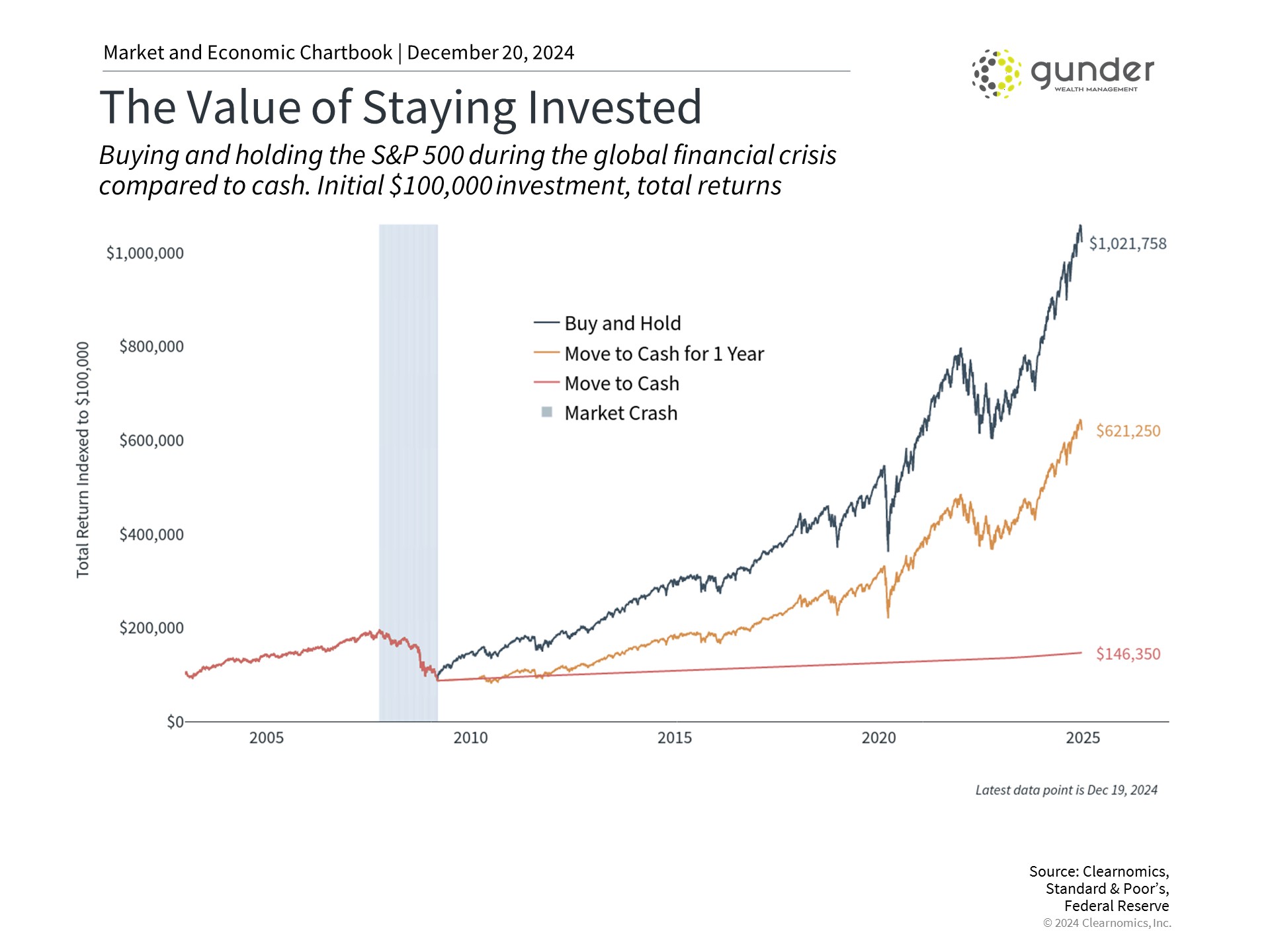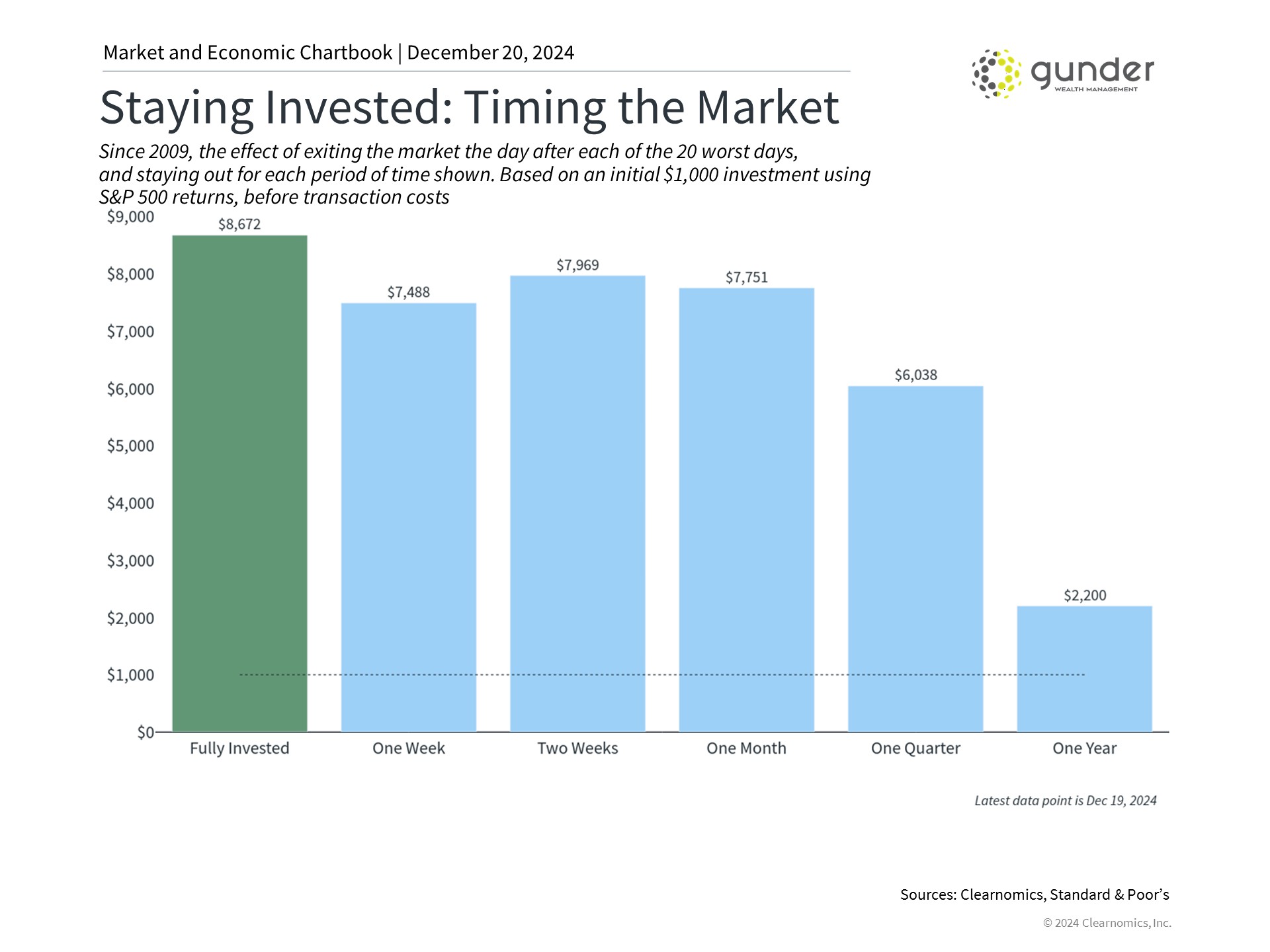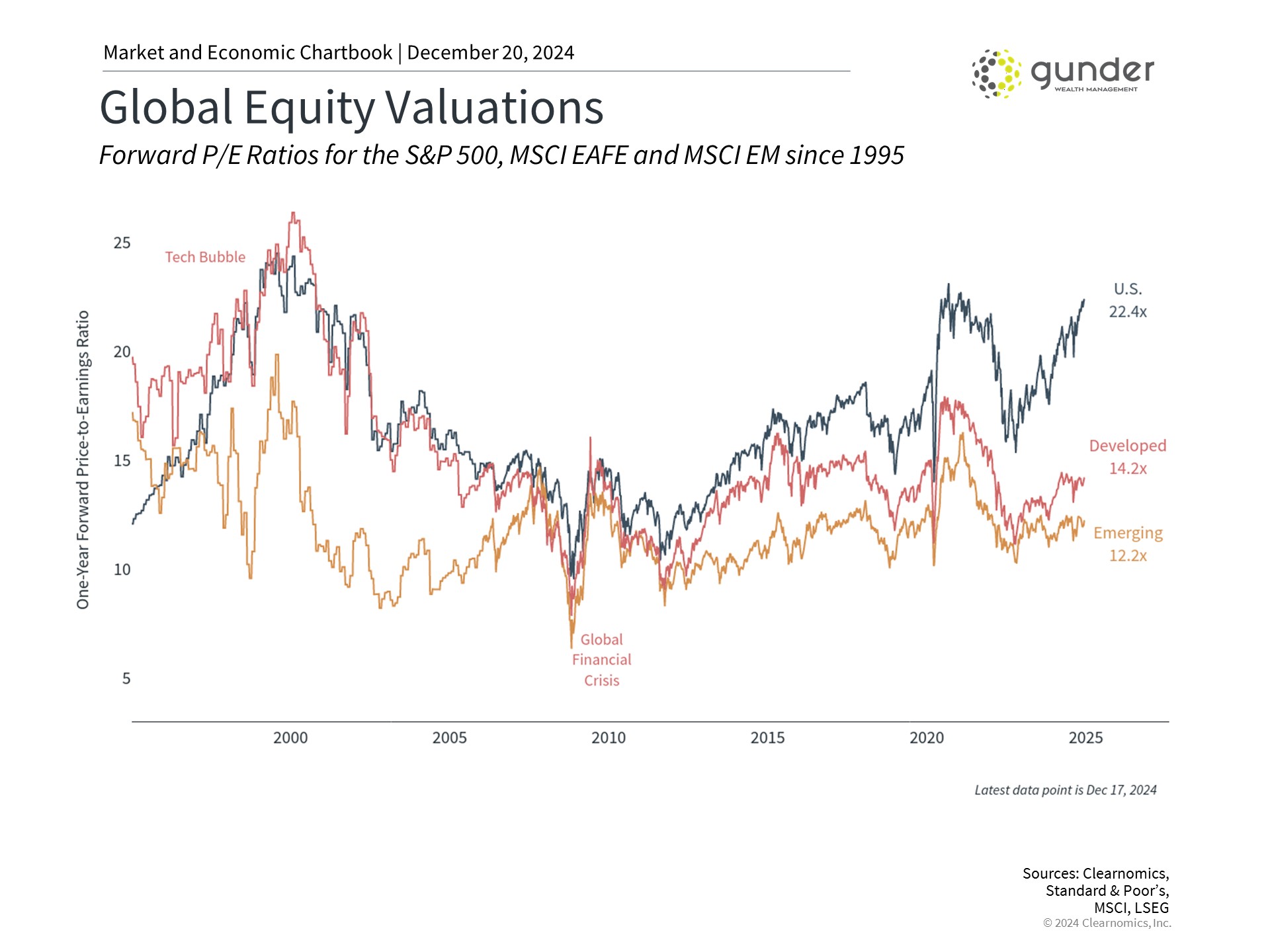
How can emotional awareness allow us avoid financial traps?
Making smart investment decisions isn’t just about knowing the markets—it’s about understanding ourselves and how we react to information. Research shows that our emotions and thought patterns can often lead us to make poor financial choices. Whether we sell in panic when markets fall or are overconfident when they rise, these natural behaviors can hurt our long-term investment success.
As we begin 2025 with markets at record highs, it’s essential to recognize these common mental traps. Let’s explore some of investors’ most frequent mistakes and learn how to avoid them.
Recency bias results in short-term thinking

First, recency bias, or focusing too much on recent events rather than long-term patterns, can lead investors to make bad decisions. Market gains over 2024 are a perfect example of the perils of letting short-term concerns drive long-term investment decisions. Despite many concerns around a recession, the Fed, the presidential election, geopolitical conflicts, and the general fear of volatility, the S&P 500 has gained nearly 30% with dividends. This highlights how markets can climb a “wall of worry” even during uncertain times.
The chart demonstrates how investors who pulled their money out during the 2008 financial crisis hurt their long-term savings. Even those who stayed out for just one year in 2009 ended with less money than those who stayed invested through the tough times.
While we focus on the 2008 financial crisis in this example, the same is true for the 2000 dot-com crash, the 2020 pandemic bear market, the 2022 pullback, or any other period of market turmoil.
Why we fear losses more than we enjoy gains

Another cognitive trap is loss aversion, which is when losses feel worse than gains feel good. If you find $10 on the street, you’ll feel happy – but losing $10 feels much worse. This natural tendency can make investors too careful, keeping too much money in cash rather than investing for growth.
Loss aversion can also drive investors to panic sell during market declines, locking in losses at the worst possible time. This bias can lead to opportunity costs when investors refuse to invest available funds during periods of uncertainty – such as staying out of markets due to fears of potential losses.
For example, during the 2020 market crash, many people sold their investments at low prices and missed the quick recovery afterward. History shows that patient investors who stay invested during temporary market drops usually benefit in the long run.
Why investing close to home isn’t always best

Third, home bias is the tendency to favor domestic stocks over international ones because of familiarity or comfort. In extreme cases, investors may focus only on the companies they or their friends and family work for, those in their hometowns, etc. While this may feel comfortable, it means missing opportunities in other countries. International investments can help reduce risk by spreading money across different markets.
International markets continue to offer unique opportunities and potential diversification benefits for global investors, along with lower valuations. Even though there are greater risks in other parts of the world, especially in emerging markets, investors are often rewarded for these risks over long periods of time. The accompanying chart shows that international markets are far more attractive than U.S. markets when comparing valuation ratios. This may be the easiest of the three ways identified here to avoid financial traps.
The bottom line?
While behavioral biases can work against investors, understanding these biases is the first step toward better decision-making. Following a steady, long-term plan works better than making emotional decisions based on market swings.
Contact us here if you would like to further address how to avoid financial traps in the year ahead.
Please consult with your financial advisor and/or tax professional to determine the suitability of these strategies. All views, expressions, and opinions in this communication are subject to change. This communication is not an offer or solicitation to buy, hold or sell any financial instrument or investment advisory services.
Copyright (c) 2024 Clearnomics, Inc. All rights reserved. The information contained herein has been obtained from sources believed to be reliable, but is not necessarily complete and its accuracy cannot be guaranteed. No representation or warranty, express or implied, is made as to the fairness, accuracy, completeness, or correctness of the information and opinions contained herein.
